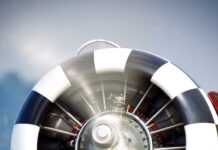In The Right Stuff, Tom Wolfe wrote about, “flying and drinking, drinking and driving.” He suggested that, since flying began, alcohol seems to have been associated with it. Within the air show community, beer and wine are available at most pre- and post-show parties. It’s a party atmosphere that helps define what the air show business is all about.
But consider a few facts:
* Alcohol is eliminated from the body at a fairly constant rate of 1/3 to 1/2 of an ounce of pure alcohol per hour, no matter how much you drink. So, while one beer may be gone in an hour, it takes a case of beer about 24 hours to disappear. FAR Part 91.17 says “eight hours, bottle to throttle,” but it also says that a pilot cannot fly while under the influence of alcohol. So, if you had a lot of alcohol, you may need more than the eight hours specifically mentioned by regulation.
* Even after elimination of the alcohol, there are undesirable effects (the hangover) that can last 48 to 72 hours after the last drink. This would also be considered “under the influence of alcohol.”
* Physiologically, alcohol is a solvent and reacts with the other fluids in your body. Specifically, we’re talking about the semi-circular canals in the inner ear, those organs responsible for balance, and the vitreous humor found in the eyeball which can lead to difficulty focusing.
I think we’ll all agree that vision and balance are important to flying, especially a high G aerobatic routine close to the ground.
One last note: the following table is from Alcohol and Flying, published by the FAA and available on their website. Note that it’s not the size of the serving, but the proof in booze that matters.
| Type Beverage | Typical Serving (oz.) | Pure Alcohol Content (oz.) |
| Table Wine | 4 | .48 |
| Light Beer | 12 | .48 |
| Aperitif | 1.5 | .38 |
| Champagne | 4 | .48 |
| Vodka | 1 | .50 |
| Whiskey | 1.25 | .5 |








